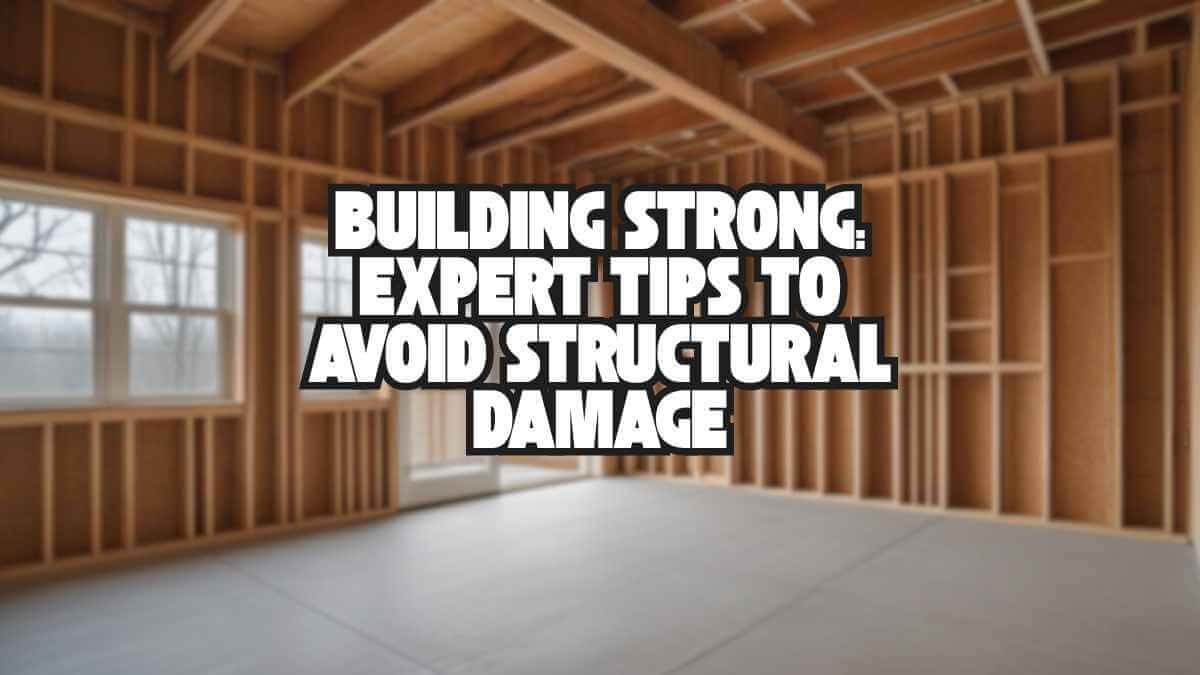Building Strong: Expert Tips to Avoid Structural Damage

A home or building isn’t just a place to live or work—it’s an investment, a sanctuary, and a reflection of care and craftsmanship. Yet, structural damage can compromise safety, reduce property value, and result in costly repairs. Preventing such issues isn’t just about reacting to problems—it’s about proactive planning and regular maintenance. Whether you’re a homeowner, contractor, or property manager, these expert tips will help you safeguard your building’s integrity and ensure it stands the test of time.
1. Start with a Strong Foundation
The foundation is literally the backbone of any structure. Cracks, uneven settling, or water damage in the foundation can trigger cascading problems in walls, floors, and roofing. To prevent this, invest in proper site preparation and foundation design before construction begins. Ensure soil is adequately compacted, drainage systems are effective, and foundation materials are appropriate for the location. Even small precautions here can prevent major headaches in the future.
2. Prioritize Quality Materials
The quality of your building materials directly affects structural durability. Opt for materials that meet or exceed building codes and are suited for your environment. For instance, moisture-resistant wood, high-strength concrete, and corrosion-resistant steel can reduce the risk of rot, cracks, and rust. Cutting corners on materials may save money initially, but it often leads to costly repairs down the road.
3. Conduct Regular Inspections
One of the most effective ways to prevent structural damage is routine inspection. Look for early warning signs such as cracks in walls or ceilings, uneven floors, or doors and windows that stick. Pay attention to plumbing leaks or drainage issues, as water infiltration is a leading cause of structural problems. Hiring a professional engineer or building inspector periodically ensures that issues are detected before they escalate.
4. Manage Water Effectively
Water is a building’s worst enemy. Poor drainage, leaking gutters, or plumbing problems can weaken foundations, erode soil, and cause mold growth. Make sure rainwater is directed away from your building with proper grading and functional gutters. Address plumbing leaks immediately, and consider waterproofing basements or crawl spaces in vulnerable areas. Preventing water damage protects both structural integrity and indoor air quality.
5. Reinforce Key Structural Elements
Certain components, such as load-bearing walls, beams, and columns, are critical for structural stability. Reinforcing these areas during construction or renovation can significantly reduce the risk of damage. Structural engineers can advise on techniques like adding steel supports, using reinforced concrete, or bracing wooden frames. Strengthening these elements ensures that your building can withstand stress, whether from natural forces or everyday use.
6. Control Environmental Stressors
Environmental factors, including earthquakes, high winds, and soil movement, can contribute to structural damage. If you live in an area prone to these conditions, consider designing your building with extra resilience. Seismic retrofitting, storm-resistant windows, and flexible foundation systems can all help your structure absorb stress without compromising integrity. Even landscaping choices, such as planting trees away from the foundation, can reduce risk.
7. Keep Up with Maintenance
Consistent maintenance is essential to stop minor problems from escalating into costly structural damage. This involves tasks such as cleaning gutters, inspecting roofs, sealing cracks, applying protective paint, and using components like metal roof foam closure strips to prevent water and pest infiltration. Routine checks, including door alignment and basement humidity levels, can also reveal early warning signs. Taking a proactive approach not only preserves your building’s integrity but also extends its lifespan, reduces repair costs, and keeps occupants safe.
8. Seek Professional Advice
Finally, don’t underestimate the value of expert guidance. Structural engineers, architects, and experienced contractors have the knowledge to identify vulnerabilities and recommend effective solutions. Whether you’re planning a new build or maintaining an existing structure, consulting professionals ensures that your efforts are focused on the most critical areas.
In Conclusion
Structural damage doesn’t happen overnight—it often starts as a minor issue that goes unnoticed. By prioritizing strong foundations, quality materials, effective water management, and routine inspections, you can prevent problems before they threaten your building’s safety.
Regular maintenance, professional advice, and careful attention to environmental stressors further strengthen your investment. Taking these steps today means a safer, more resilient, and longer-lasting structure tomorrow. A strong building is more than walls and beams—it’s peace of mind, security, and the confidence that your property will endure for generations.



